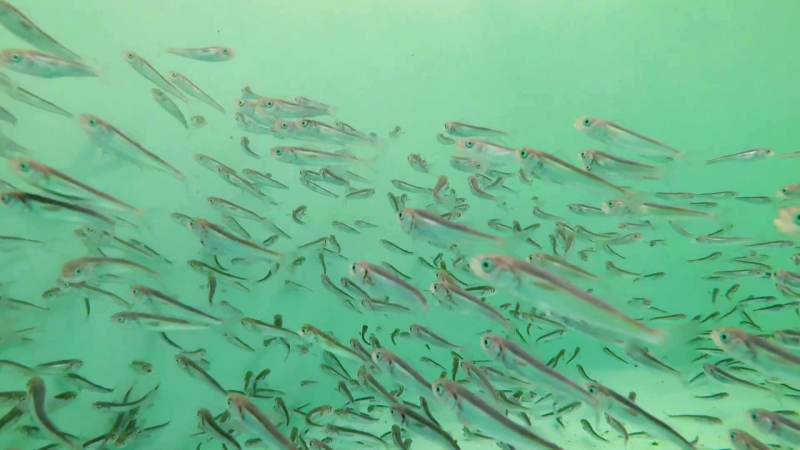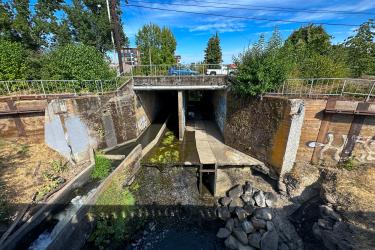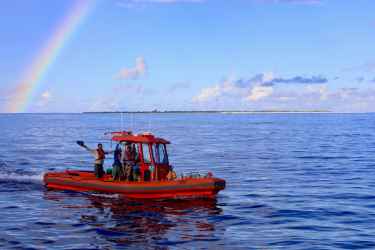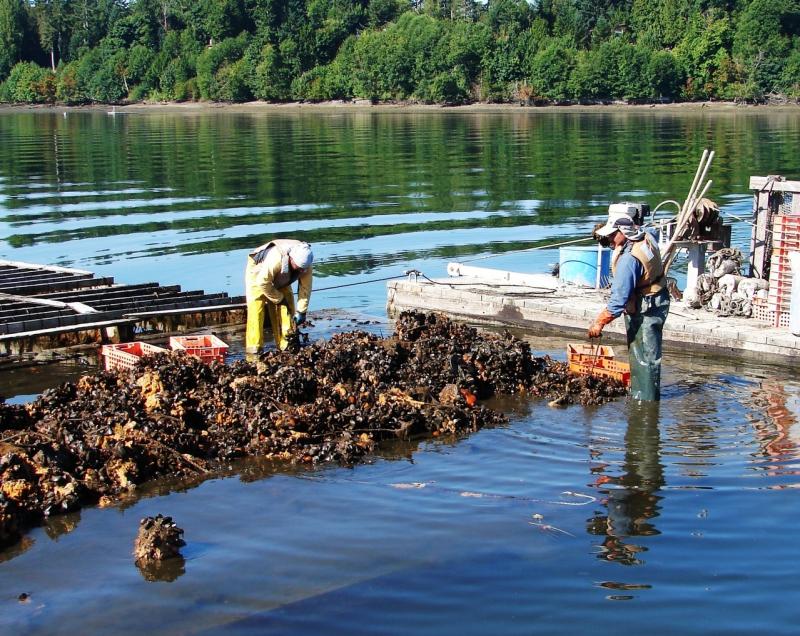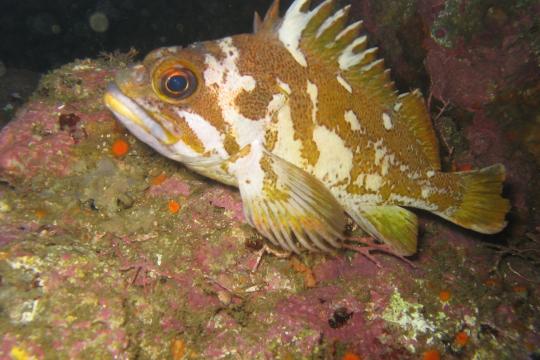NOAA scientists searching for new fish feed ingredients made a promising discovery earlier this year: sablefish raised on mealworms grow as large as those fed fishmeal, which is made with certain wild-caught fish. This is one of the latest studies in a collaborative effort to craft a balanced diet for farmed fish with no fish products. Their results, along with industry innovations, could equip aquaculture to meet the world’s growing seafood demand without increasing farmers' dependence on forage species that serve as prey for larger fish.
The mealworm study, conducted by Bernadita Anulacion at the Northwest Fisheries Science Center’s Aqualab, compared the growth of a total of 168 sablefish fed one of three diets. The first group got their protein from plants and fishmeal. The second chowed down on a diet of plant proteins, mealworms, and fishmeal. And the third dined on plant proteins and mealworms. At the end of 10 weeks, all 168 were alive and had clocked roughly the same growth rate.
“We’ve made a lot of progress towards reducing aquaculture’s reliance on wild fish caught for feed in recent decades. We’re seeing better use of fish trimmings for feed, and feeds now commonly incorporate plant-based proteins,” said Ron Johnson, team leader of the NWFSC Fish Feed and Nutrition Team. “Now we’re looking at new alternatives and ways of combining ingredients that could completely eliminate fish products from aquaculture diets while still producing a healthy seafood product for consumers.”
Why Feed Alternatives Matter
Like their wild counterparts, farmed marine fish require a balanced mix of essential nutrients, amino acids, and fatty acids. Traditionally, aquaculture farmers mimicked diets found in the wild by serving fish feeds rich in whole fish, fish oils, and processing waste from commercial fisheries. That started to shift in the early 2000s.
Fishmeal and oils primarily come from small, open-ocean species like anchovies, menhaden, sardines, and mackerel. Each of these fish are sustainably managed in U.S. federal waters under the Magnuson-Stevens Act. But an over-reliance on these finite marine resources put a limit on how much the food industries, including aquaculture, could sustainably expand.
So scientists and the aquaculture industry turned their sights to alternative ingredients. Today, commercial feed contains proteins from soybeans, corn, peas, and wheat. Fish oils have also been supplemented with soybean, canola, and flaxseed oil.
Together, these products have substantially reduced the amount of raw marine materials in aquaculture feed. For example, fish-based ingredients in some Atlantic salmon feed may have fallen from 90 percent in the 1990s to just 25 percent.
A Fish-Free Future for Aquafeeds
Crop-based products have their own limitations. Soy and corn lack some of the important building blocks of proteins. And traditional plant oils don’t provide long chain omega-3 fatty acids—a nutrient that is key to fish growth and currently found only in seafood.
Known as “essential fatty acids,” long-chain omega-3s also have significant impacts on human heart and brain health. They may also reduce the risk of Alzheimer’s and rheumatoid arthritis and aid in the development of muscle tissues. These fatty acids are a large part of why the U.S. Dietary Guidelines recommend eating seafood at least two times a week to promote optimal health and wellness.
Feeds today still use some fish oil to ensure these important omega-3s are present in farmed fish.
To fuel the next generation of fish feeds, NOAA Fisheries and others are investigating new, innovative ingredients. The research so far suggests that insects, phytoplankton, and single-celled proteins like mold, yeast and bacteria could provide the same proteins as fishmeal. It’s still unclear what impact each of these sources have on a fish’s overall nutrition. For phase two of the mealworm study, researchers are testing if the sablefish raised on that diet have a different nutritional value than their fishmeal-fed counterparts.
Fish oil may prove harder to replace, but algae could hold the key here too. Some companies are developing feeds that incorporate omega-3 fatty acids harvested from algae cells, which convert sugar into essential fatty acids when they are fermented. Researchers at Ocean Era—formerly Kampachi Farms—based in Hawai‘i have successfully raised almaco jack on a completely fish-free diet. Funded through NOAA Fisheries’ Saltonstall-Kennedy Grant Program, the project developed a diet that used algae-based oil in place of fish oil.
“There is still work to be done, but what’s clear is that fish meal and fish oil are not nutritionally required to raise healthy farmed fish that are good for consumers,” said Johnson. “NOAA Fisheries and our agency partners are dedicated to finding cost-effective, nutritional alternatives so aquaculture can continue to sustainably meet global seafood demands.”
